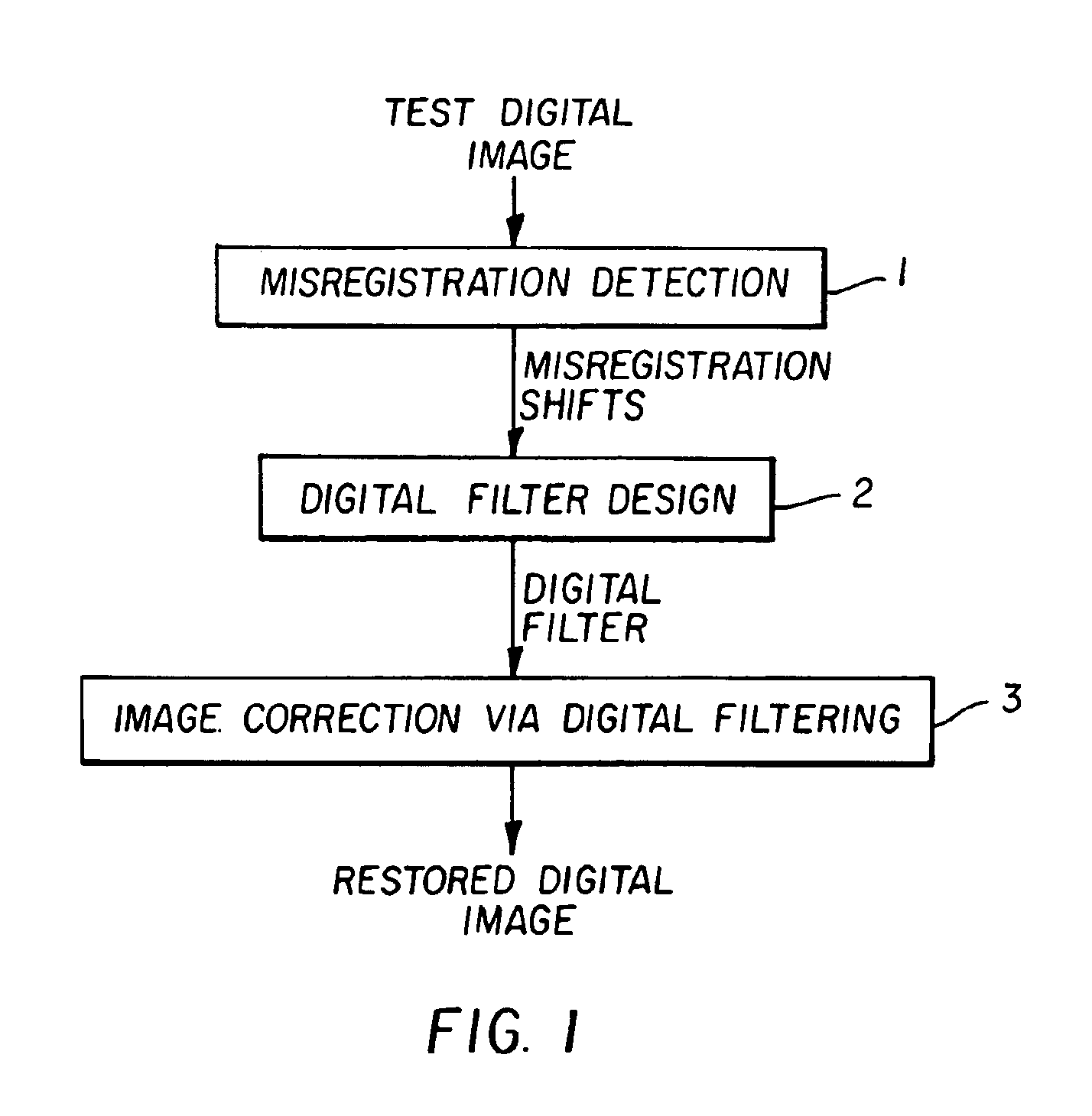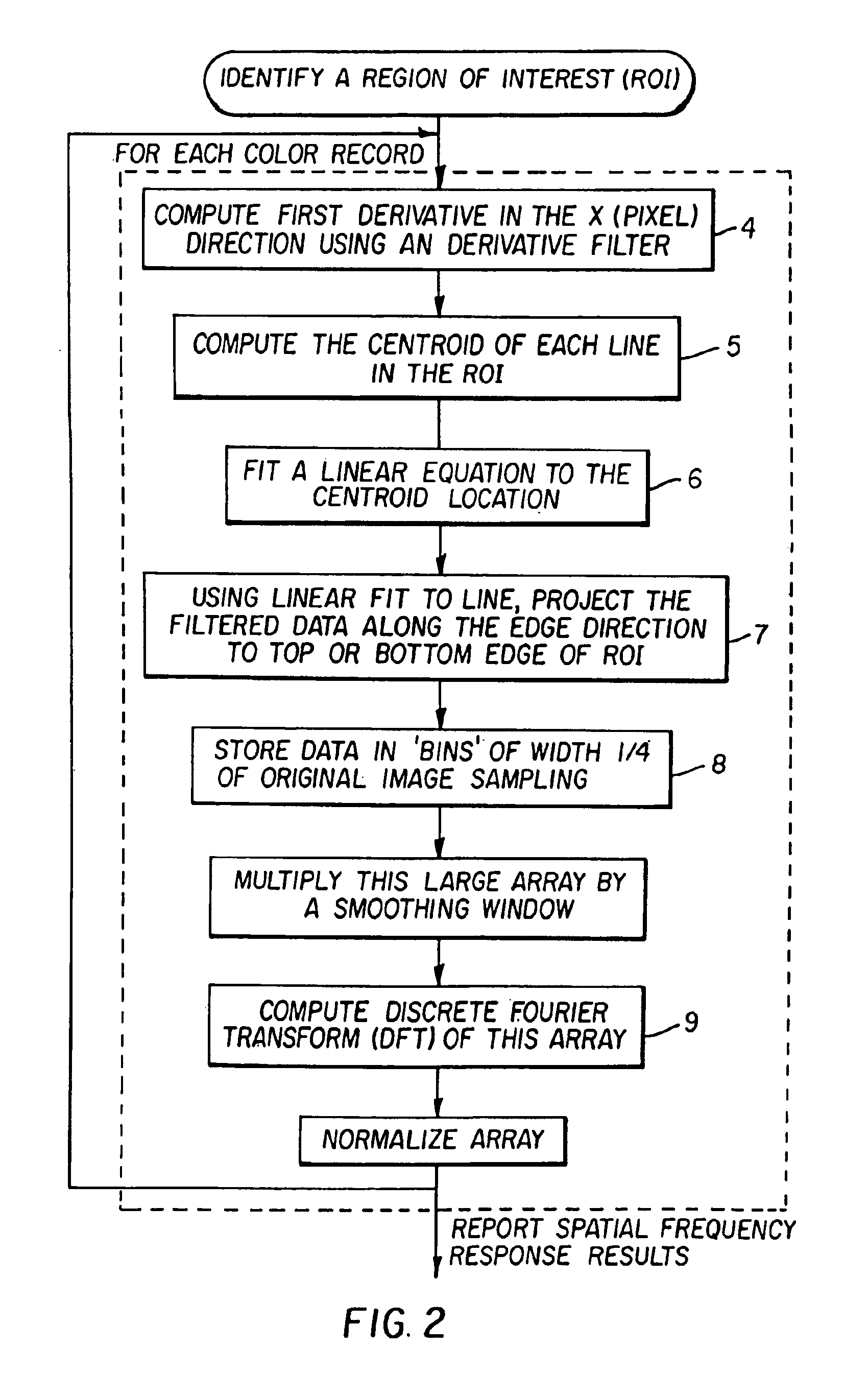Image processing for improvement of color registration in digital images
a technology of image processing and color registration, applied in the field of digital image processing, can solve the problems of color image displayed or printed from color records that cannot be registered correctly, color distortion artifacts, loss of sharpness or color distortion, etc., and achieve the effect of improving the sharpness of digital images and increasing certain spatial frequencies in images
- Summary
- Abstract
- Description
- Claims
- Application Information
AI Technical Summary
Benefits of technology
Problems solved by technology
Method used
Image
Examples
example
A filter design was specified to include sharpness enhancement defined by an aim MTF that peaked at 3.0 in the v (y) direction, and with a low-pass characteristic in the u (x) direction. In addition, an image shift of +0.5 (pixels) in the x direction was specified. The modulus and phase responses are shown in FIGS. 4 and 5.
The next step is to populate a complex array with the real and imaginary parts that correspond to the above aim responses. The required symmetry in the Fourier domain (to yield a real FIR filter) has to be observed, however. This is shown in FIGS. 6 and 7. A 6×6 size filter was designed using the above techniques and no smoothing window function. The filter coefficients are [-0.028-0.12-0.34-0.12-0.028-0.018-1.-4.4-12.-4.4-1.-0.661.87.922.7.91.81.21.87.922.7.91.81.2-1.-4.4-12.-4.4-1.-0.66-0.028-0.12-0.34-0.12-0.028-0.018]
The filter characteristics achieved, shown in FIGS. 8 and 9, compare well with the desired MTF and PTF, given in FIGS. 4 and 5.
The invention has...
PUM
 Login to View More
Login to View More Abstract
Description
Claims
Application Information
 Login to View More
Login to View More - R&D
- Intellectual Property
- Life Sciences
- Materials
- Tech Scout
- Unparalleled Data Quality
- Higher Quality Content
- 60% Fewer Hallucinations
Browse by: Latest US Patents, China's latest patents, Technical Efficacy Thesaurus, Application Domain, Technology Topic, Popular Technical Reports.
© 2025 PatSnap. All rights reserved.Legal|Privacy policy|Modern Slavery Act Transparency Statement|Sitemap|About US| Contact US: help@patsnap.com



